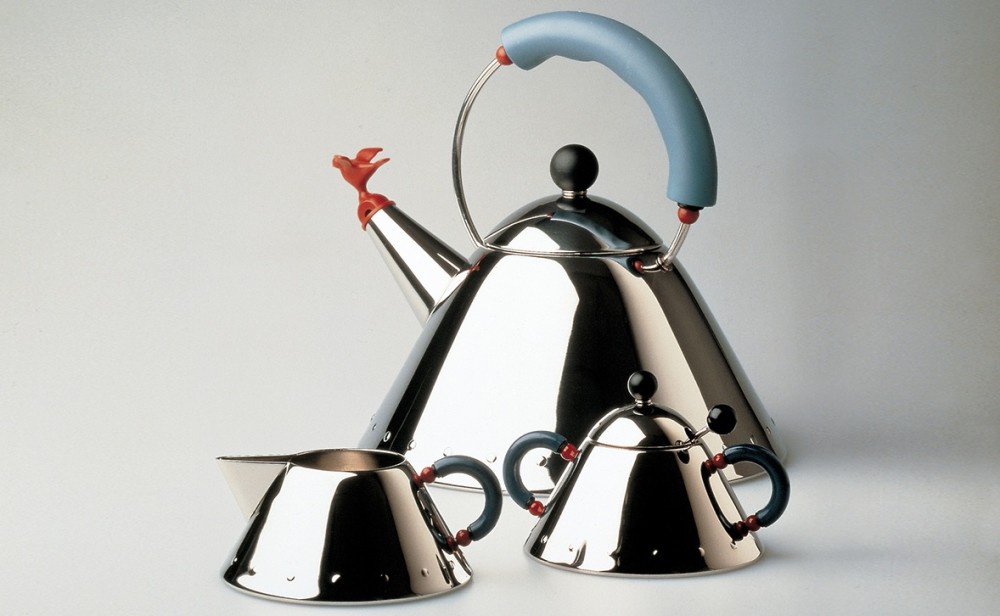Remembering Michael Graves (1934–2015)

Michael Graves / Alessi Kettle ("the kettle with the bird on it"); 1903

Michael Graves / Alessi Kettle ("the kettle with the bird on it"); 1903
Michael Graves, who passed away last week at the age of 80, was one of our country’s most important architects, teachers, and designers. Over the course of a career that spanned a half century, Graves designed more than 350 buildings worldwide, taught countless students, and brought good design into homes across the country. As an undergraduate art history student in the early 1980s, I worked part-time in the art library where, in between checking out books, I read all the latest architecture magazines. It was impossible not to be exposed to the work of Michael Graves at that time and I ate it up. His Humana headquarters (1985) in Louisville, Kentucky, and Portland Municipal Building (1982) in the Oregon capital were a welcome relief from the chilly elegance of glass-and-steel modernism. They were playful. And colorful. And they signaled that something new was happening in architecture.
Adorned with abstracted classical motifs including swags, cartouches, caryatids, and a supersized keystone, the Portland building became the centerpiece of postmodern architecture. Derided by some as cartoonish, the architecture historian Charles Jencks called it “the first major monument of Postmodernism, just as the Bauhaus was of Modernism, because with all its faults it still is the first to show that one can build with art, ornament, and symbolism on a grand scale, and in a language the inhabitants understand.” The playfulness Graves brought to his buildings—his Burbank headquarters for Disney features the seven dwarfs acting as caryatids to hold up the roof—made them more human and accessible to the public and to those who used them.
Although postmodernism never really took root as an architectural movement it helped to break open the white box of modernism to other ways of thinking about and designing buildings, leading to a greater variety and diversity in our built landscape. Graves successfully translated the vocabulary and color palette he had developed in his 1980s architecture to a wide range of consumer products, both high-end and mass market. His 9030 Kettle for Alessi (1985), popularly known as “the kettle with the bird on it,” is the best-selling item in the company’s history. But it was Graves’s collaboration with Target that truly made good on his firm belief that good design should be accessible to all and brought his product design into millions of American homes. The now-iconic Michael Graves for Target Collection debuted in January 1999 and not only did it spawn the designer/retailer collaborations that proliferate today, it pioneered the movement to bring innovative design to all (popularized by Philippe Starck, IKEA, H&M, and Design Within Reach, among others) and signaled the transformation of Target into the brand we know and love today. Graves’s Pop Art Toaster and the Spinning Whistle Teakettle are two of the best-known pieces from an exceedingly fruitful partnership that lasted more than a dozen years and resulted in more than 2000 products.
In 2003, due to a spinal cord infection, Graves became paralyzed from the waist down. His disability led him to become an ardent advocate for health care design and he devoted his practice to designing health care facilities and tools to help the disabled. He brought color into hospital rooms, reimagined better wheelchairs and walking sticks, and his fame brought much deserved attention to the need for better design in the health care industry. “Most of what exists now is just too depressing to even die in. I believe well-designed places and objects can actually improve healing, while poor design can inhibit it,” he told the Washington Post in July 2014. Over the last decade, Graves designed hospitals, rehab facilities, and partnered with the Army to design homes for wounded soldiers at Fort Belvoir, Virginia.
Cooper Hewitt is honored to have a number of works by Graves in its collection and while we mourn his passing, we celebrate his achievements and his contributions to making a better world for all of us.
Brooke Hodge
March 15, 2015
Featured Image: Michael Graves / Alessi Kettle ("the kettle with the bird on it"); 1903